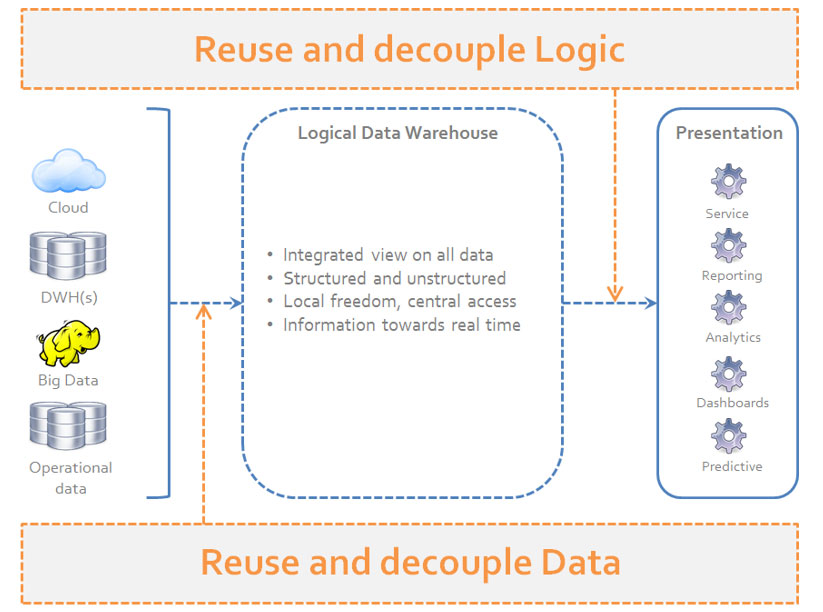
The amount of data we have at our disposal is growing immensely. More and more systems are creating an increasing amount of data in an increasing number of places. This seems like an opportunity for more information and for improved insight which allows you to make better decisions, but in reality existing data processing systems cannot handle the growth of these data streams and new demands. While cloud systems and software-as-a-service are becoming more important, the data warehouse is slipping into the background.
Information consumers notice this every day. Operating costs, complexity, the impact of change, increased development time, lack of flexibility and data actuality are becoming problematic, heavily obstructing the integration of even more data. Users want to be in the driving seat when it comes to creating their own information. They want to play with their data and need it to be flexible. In fact, they need to add and integrate simple data, information and insights to adapt to changing market needs and new demands.
Unlock the Potential of Your Data
The logical data warehouse is the answer to this problem by decoupling reporting and analyses from the data sources. It is a flexible architecture that allows you to easily combine new data sources with data warehouse and data marts. The type of data source is no longer a restriction, whether it is from Hadoop, a web service, or existing front or back office applications.
The logical data warehouse looks and behaves like a single, yet virtual, data repository making the data appear as if it were in one central place. The data virtualization layer holds virtual views that define a virtual data model. This data model is consumed by client applications from the centralized data virtualization layer. The data consumers do not need to know where the data is coming from or how it is stored. This frees the architect to combine several data sources, extend the data warehouse with external systems and add capabilities to the data processing infrastructure.
By abstracting the data in the source systems from the reporting applications, you can decouple the direction connection between the reporting applications and the data source. Such implementation unfetters the business logic residing in the source systems from the reporting systems, which can remain unchanged. In other words, this does not impact existing reports and paves the way for real data governance, in which you can leverage your data, depending on its characteristics and value.
Data Virtualization for the Logical Data Warehouse
The secret sauce behind the logical data warehouse solution is data virtualization. Data virtualization provides query federation capabilities to support the logical data warehouse architecture while also isolating the user from the complexities. It offers users an abstract information layer, in which different sources are disclosed in real-time and data is transformed and integrated.
Kadenza recently announced a strategic partnership with Denodo to offer the logical data warehouse solution to enable its customers to provide deeper insights across all enterprise data sources. Data virtualization for the logical data warehouse means customers can quickly add new sources and make data instantly available to consumers through reporting applications, without replicating data. This results in an unrivalled fast time-to-market and lowers total cost of ownership.
If want to learn more about this topic, look into the Educational Seminar: Logical Data Warehouse, Data Lakes, and Data Services Marketplace organized by Denodo.
This blog was penned by Jonathan Wisgerhof, Senior Architect, Kadenza
- How Much Time Could Your Company Save If You Said Goodbye to Data Migration? - January 30, 2019
- Get Ready for the General Data Protection Regulation (GDPR), with Data Virtualization - May 24, 2018
- Data Virtualization is a Revenue Generator - September 20, 2017

